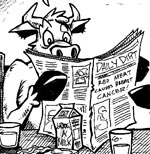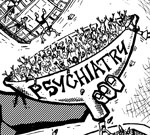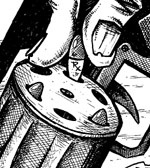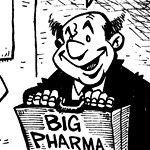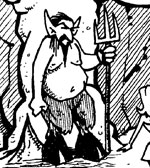Benefits of L-cysteine - Using NAC for Better Breathing, Clearer Skin and More
| Share on Facebook | Share on Twitter | Share on Google+ |
L-cysteine is a basic building block of the the antioxidant glutathione, the human body's most important antioxidant. Glutathione recharges vitamins C and E as they are used as antioxidants. It helps protect DNA from chemical damage. It detoxifies heavy metals, and it helps keep arteries and airways open. It also activates many important functions of the immune system.
L-cysteine is also the amino acid every cell uses to make inteins, the enzymes that "snip" protein molecules to the right size and configuration, and the caspases, which dissolve dead cells, especially dead cancer cells, from the inside out.
How The Body Acquires L-Cysteine
L-cysteine is not an "essential" amino acid. Under optimal conditions, the human body can manufacturer it from the amino acids serine and methionine. If the folic acid, vitamin B6, and vitamin B12 are not available, however, the body cannot make the enzymes that complete the conversion of serine and methionine into L-cysteine.
Once the body has made L-cysteine from serine and methionine or digested it from food or supplements, it uses L-cysteine along with two more amino acids, glutamine and glycine, to make the "master antioxidant" glutathione. There are some foods that contain glutathione, and it is possible to find a glutathione supplement, but so little of the antioxidant survives the digestion process that the body has to make essentially all of its own glutathione. Cysteine is usually the amino acid in shortest supply for making this antioxidant.
L-Cysteine Supplements
N-acetyl-L-cysteine, also known as NAC, is the form of L-cysteine found in nutritional supplements. Pure L-cysteine is oxidized to another chemical called cystine if is stored on the shelf. The NAC form of L-cysteine is not damaged by contact with the air, and releases L-cysteine after digestion. Researcher Mead Johnson found a way to make NAC in the 1960's, and supplement manufacturers first marketed it as a treatment for lung conditions that benefit from removal of phlegm.
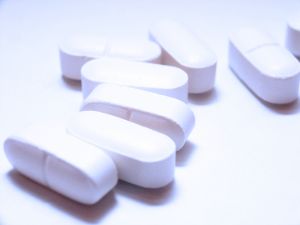 NAC forms compounds that "melt" mucus. Phlegm and mucus are held together by fibers of a protein called collagen. The strands of collagen link together where sulfur appears in their protein molecules. As a high-sulfur compound itself, NAC binds to sulfur in the mucus so its framework begins to deteriorate. This makes it easier to cough or sneeze mucus out of airways.
NAC forms compounds that "melt" mucus. Phlegm and mucus are held together by fibers of a protein called collagen. The strands of collagen link together where sulfur appears in their protein molecules. As a high-sulfur compound itself, NAC binds to sulfur in the mucus so its framework begins to deteriorate. This makes it easier to cough or sneeze mucus out of airways.As a source of L-cysteine, NAC helps the body make glutathione and also to make cofactors for detoxification enzymes in the liver.
So how can you use L-cysteine supplements in nutritional support for common health issues? The most obvious conditions NAC and L-cysteine support are allergies, acne and sun-damaged skin, and chronic bronchitis and emphysema. NAC and L-cysteine are not helpful for hair, and they are helpful only for a few people who have acne.
L-Cysteine for Allergies
L-cysteine supplements can be very helpful for allergies that cause snot and phlegm. It doesn't stop the production of mucus, but by breaking down the bonds that cause the collagen in mucus to clump, it can make nose and throat secretions runnier and easier to expectorate or sneeze away.
L-Cysteine for Skin Protection
L-cysteine helps the skin defend itself against sun damage. Together with selenium, vitamin C, and vitamin E, L-cysteine helps skin cells form the enzymes that keep a gene called p53 active. This "watchdog" gene triggers a series of steps that cause a potentially cancerous cell to undergo a process called apoptosis, or "cell suicide." When p53 detects changes in skin DNA that could cause cancer, it shuts down the cell. L-cysteine is also important for the formation of the caspases that dissolve the cell once it dies.
L-cysteine for acne
L-cysteine is also frequently recommended for acne, with the explanation that it "helps vitamin B5 work better." Vitamin B5 is pantothenic acid, often marketed in skin care products as Panthene or Panthetine. Typically the Internet experts who recommend a combination of L-cysteine and high-dose vitamin B5 for acne argue that since vitamin B5 is water soluble and any excess is quickly removed from the bloodstream by the kidneys, the only way to trick the kidneys is by taking a mega-dose of vitamin B5 to work with the L-cysteine.
First of all, please understand that it is never a good idea to take a supplement so your urine will be full of it, although "full of it" is a phrase that comes to my mind when I hear these kinds of suggestions.
Secondly, please understand that l-cysteine is helpful in some cases of acne, but not in others. L-cysteine will help when:
- Benzoyl peroxide treatment of pimples causes acne inflammation of its own. A combination of l-cysteine and alpha-lipoic acid reduces redness and itchiness of pimples in this case. Vitamin E creams and supplements, by the way, actually make the inflammation worse.
- Women who have polycystic ovarian syndrome develop acne as a symptom. L-cysteine helps cells in the skin become more sensitive to estrogen and less sensitive to testosterone (which is produced in excess when women have polycystic ovarian syndrome). Taking an L-cysteine supplement may be very helpful for women who also take the medication Clomid (clomiphene). Results will be less noticeable in women who are not on medication for hormone imbalances.
Vitamin B5 for Acne Treatment
Most of the time, L-cysteine won't help acne. And what about the vitamin B5/Panthetine recommendations? Actually, if you take a lot of vitamin B5 capsules, your body can't absorb biotin. If you create a biotindeficiency by taking high-dose vitamin B5, your skin's oil production will increase, not decrease. The result will be a different kind of bump, known as seborrheic dermatitis, but you won't be helping your acne, either.
Vitamin B5 or panthothenic acid skin creams, on the other hand, can be very helpful. Since they are applied directly to the skin, they don't keep the body from absorbing biotin. The skin uses pantothenic acid to make coenzyme A, which releases energy from carbohydrates, fats, and proteins. A clinical study in China of 45 males and 55 females between 12 and 30 years of age found that applying a cream made with pantothenic acid began to eliminate pimples in 1–2 weeks. The cream contained 10 grams of pantothenic acid diluted to a 20 percent concentration. It was applied 4–6 times per day. The physicians supervising the study noted no side effects.
Take l-cysteine capsules. Use pantothenic acid creams.
What About L-Cysteine for Hair Care?
L-cysteine used to be made by dissolving human hair. Human hair is about 14% L-cysteine. Nowadays this amino acid is extracted from duck feathers. Since L-cysteine used to be made from hair, many people have supposed that taking L-cysteine supplements would be good for the health of hair.
The problem with taking lots of L-cysteine for hair growth is the same as with taking lots of L-cysteine for skin growth. When you take large amounts of L-cysteine, your digestive tract can't absorb as much biotin. And when there is biotin deficiency sebum production increases and in the worst cases can literally choke the hair follicle so that hair falls out.
What about an L-cysteine shampoo? Here the problem is that visible hair is not living. It has already been created, and it cannot incorporate L-cysteine into its structure. And unless you leave the shampoo on your scalp 24 hours a day, the L-cysteine is not going to seep into the follicle that produces the hair, which uses glycine and tyrosine in greater amounts than L-cysteine, anyway.
The best way to support hair growth is by making sure you consume balanced amounts of protein every day. L-cysteine is not the only amino acid in the proteins that make up hair, and you can't get into inside the hair shaft by rubbing it in your hair.
What Are Legitimate Uses for L-Cysteine?
Take NAC for supplemental L-cysteine if:
- You suffer congestion caused by allergies.
- You deal with chronic bronchitis or emphysema.
- You have acne that is made worse by benzoyl peroxide or you are a woman who has acne related to polycystic ovarian syndrome (PCOS).
- You have sun-damaged skin and you are concerned about future development of skin cancer.
How Do You Take L-Cysteine
It generally takes at least 400 mg of L-cysteine a day to make a difference in symptoms, while more than 1000 mg a day can interfere with absorption of other nutrients. Taking more than 1000 mg of NAC daily can also cause some rare side effects:
- Very high doses of NAC can make cysteine-based kidney stones larger.
- Diabetics who take NAC can get false positive readings when they test their urine for ketones.
- Men who take both NAC and the erectile dysfunction drug Viagra, Cialis, or Levitra may get migraine headaches when they take the medication for impotence.
- NAC or cystine supplements may counteract the benefits of Adriamycin (doxorubicin) used to treat breast cancer.
And smokers probably should not take NAC unless they intend to quit. Any kind of antioxidant taken by smokers can have unintended side effects due to disturbances of detoxification enzymes in the liver. The problem with L-cysteine for smokers is that it can activate the immune system to cause inflammation in the lungs, activation of the immune system not always a good thing.
-
Skin CareMen Skin Care
-
Free ResourcesFree eBooks
-
Health is not simply the absence of sickness.Hannah Green
-
What We RecommendIf you do an analysis of the ingredients in a bottle of
 Total Balance and compare with other products you will find that it provides exceptional value for money…even against simple mass produced products with lower bottle costs.
Total Balance and compare with other products you will find that it provides exceptional value for money…even against simple mass produced products with lower bottle costs.
-
